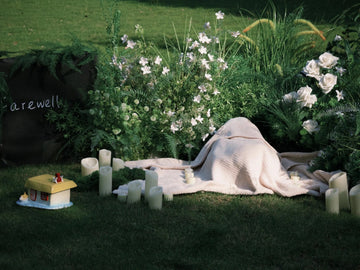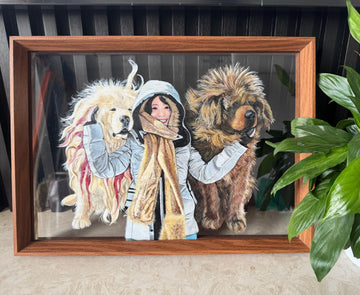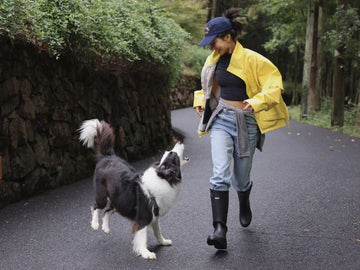When a beloved animal dies, families everywhere face the same quiet: the bowl on the mat, the leash that no longer pulls, the sunbeam without a sleeper. How we say goodbye—burial, cremation, prayer, sculpture, garden, story—varies across landscapes and traditions, but the goal is shared: to carry love forward. This long-form guide surveys pet funerary practices around the globe and offers gentle ideas for honoring continuing bonds at home.
1) How to Read Global Practices: Four Frames
1. Ritual ecology
Local climate, soil, and urban density shape practice: woodland burials in temperate zones; urn walls where land is scarce; indoor altars in small apartments; water rites where rivers are central.
2. Memory vernacular
Every culture has a “style” of remembrance—incense and sutras, garden statuary, engraved stones, woven textiles, digital candles. The vernacular influences what feels “right.”
3. Legal landscape
Rules differ by city/region. Some allow backyard burial; others require licensed cremation. Always check local guidance before making plans.
4. Continuing bonds
Across traditions, families keep relationships alive—through seasonal visits, letters to the departed, shared meals, or maintaining a small home shrine.
2) Asia-Pacific: Temples, Tree Burials, Aqua Cremation, Nature Rites
Japan
In many cities, dedicated pet crematoria offer full services—private or communal cremation, farewell rooms, bone-picking ceremonies, and memorial tablets. Some Buddhist temples host services with chanting, memorial tablets (ihai), and seasonal remembrance days. Families often visit columbarium walls, place flowers, and write letters tucked behind frames.
South Korea
Urban density encourages cremation with urn niches or home shrines. Families may commission miniature portraits or gentle clay figures. Annual memorial meals—placing tiny portions of favorite treats—express gratitude and continuity.
China (varied by city)
In large metros, licensed pet cremation is common, with ashes kept in decorative urns or scattered in garden memorial zones. In smaller communities, families sometimes create discreet home altars with framed photos, candles, and handwritten poems—a practice of quiet continuity.
Taiwan & Hong Kong
Temples and specialized centers provide prayer services and ash storage. Tree burials—interring ashes near saplings—symbolize return to nature. Many families favor compact, elegant altars with incense and a weekly “hello.”
Singapore
Beyond standard cremation, some providers offer alkaline hydrolysis (also called aqua cremation), a water-based process seen as a lower-emission alternative. Ash remains may be placed in biodegradable urns, scattered at sea on permitted trips, or mixed into planters on balconies.
Thailand
Monk blessings and temple grounds memorials appear in some areas. Families may light incense at home altars and donate to local shelters in their companion’s name—turning grief into care.
India
Practices vary by region and faith. In some cities, veterinary colleges or NGOs assist with cremation. Families often keep a framed photo and fresh marigolds near a lamp; some perform a brief puja at home, thanking the animal for guardianship and joy.
Australia & New Zealand
Pet cremation is widespread; memorial gardens and “native plantings” are popular in eco-sensitive communities. Families sometimes create backyard remembrance corners with endemic shrubs, bird baths, and engraved river stones—rituals that fit the landscape.
3) Europe: Garden Cemeteries, Woodland Memorials, Artful Markers
United Kingdom & Ireland
Private cremation with paw-print keepsakes is common. Garden cemeteries offer sculpted paths, benches, and seasonal flowers. Eco-conscious families choose woodland burials with biodegradable urns and GPS-marked trees rather than stones.
France, Spain, Italy
Historic pet cemeteries exist in some cities, while modern facilities provide artful memorial walls, small chapels, and sculpture commissions. Many families fold remembrance into daily life—fresh flowers by a frame, a candle at dusk, a line of poetry recited on anniversaries.
Germany, Netherlands, Belgium
Well-regulated crematoria emphasize transparency and meticulous handling. Green burials and woodland remembrance trails are growing. In the Netherlands, bike-accessible memorial parks allow spontaneous visits—mourning woven into commuting routines.
Nordics (Sweden, Norway, Denmark, Finland)
Design-forward memorials blend minimal markers with forest edges and water views. Families prize quiet, low-impact rituals: lighting lanterns along winter paths, placing sprigs of juniper or birch during seasonal walks.
Central & Eastern Europe
Urban centers offer cremation with urn storage; suburban areas may have dedicated burial plots. Hand-carved wooden markers and folk motifs appear alongside modern plaques—memory vernaculars layering old and new.

4) The Americas: Home Burials, Community Rituals, Aqua Options
United States
Options range from private cremation and memorial gardens to alkaline hydrolysis in permitted states. Some families keep ashes at home in sculptural urns; others scatter in favorite parks where allowed. Community vigils—especially after disasters—offer collective space for grief literacy and remembrance.
If you’re navigating the liminal days after goodbye and wondering about signs or closure, this gentle guide—how do i know my dog crossed the rainbow bridge—gathers perspectives families often find comforting.
Canada
Cremation and memorial forests are common. Winter climates influence timing; families sometimes hold a two-stage ritual: immediate private goodbye, then a spring interment or scattering with friends and favorite treats.
Mexico & Latin America (varied)
Rituals may integrate family altars and seasonal remembrance like Día de Muertos. Pet photos and small offerings (toys, cookies) share space with ancestors—an inclusive message: all who loved and were loved belong.
Brazil
In larger cities, cremation services provide farewell rooms and ash jewelry. Many families create balcony memorial planters with tropical greenery—living tributes suited to climate and apartment life.
5) Middle East & Africa: Respect, Simplicity, and Place-Based Memory
Practices across the Middle East and Africa are shaped by diverse beliefs and local regulations. In many places, respect and simplicity guide decisions: professional handling, discreet interment where allowed, and home remembrance through photos, prayers, or charitable acts.
South Africa & Kenya
Urban cremation and rural burials coexist. Families often frame remembrance with landscape: a view of hills, an acacia’s shade, a coastal walk on anniversaries. Shelters frequently receive donations in a pet’s name—grief translated into care for others.
Egypt
In major cities, veterinary networks connect families to cremation services. Some incorporate ancient motifs—winged forms, lotus, sun disks—into modern markers, connecting present love with deep regional symbolism.

6) Comparison Table: Methods, Setting, Keepsake Style
| Method | Typical Regions | Setting | Keepsake / Marker | Notes |
|---|---|---|---|---|
| Cremation (private/communal) | Global urban centers | Crematoria, columbaria, home shrines | Urns, paw prints, ash jewelry | Transparent chain-of-custody helps families feel at ease. |
| Woodland / Green burial | UK, EU, parts of NA & ANZ | Forests, meadows | Tree plantings, GPS markers | Biodegradable caskets/urns minimize impact. |
| Temple rites & memorial tablets | Japan, Taiwan, parts of SEA | Temples, memorial walls | Tablets, incense, seasonal services | Integrates prayer/chanting with modern storage. |
| Aqua cremation (alkaline hydrolysis) | Selected US states, Singapore, parts of EU | Licensed facilities | Powdered ash remains | Water-based; often chosen for lower emissions. |
| Home burial (where allowed) | Americas, rural EU, Africa | Backyards, gardens | Stones, plants, plaques | Check local laws; consider depth, water tables, wildlife. |
| Scattering & sea rites | Coastal regions worldwide | Permitted waterways, hills | Biodegradable urns, flowers | Observe environmental guidelines; choose quiet times. |
| Legal frameworks vary widely; consult local authorities and trusted providers before finalizing plans. | ||||
7) Home Memorials: Shelves, Letters, Annual Rituals
Not every country offers expansive parks or temple services. That’s okay. Many families build meaningful, low-cost tributes at home:
- Memory shelf: a frame, a small object (tag, toy), a flower or branch that changes with seasons.
- Letter ritual: on anniversaries, write a note about the year—what you learned, where you traveled, who you helped in their name.
- Shared meal: place a token of their favorite treat (for you, not for wildlife) and tell one story aloud.
- Sound cue: a short chime or song when lighting a candle; music helps bodies remember to breathe.

8) Ethics & Ecology: Green Choices, Consent, Data Privacy
- Green memorials: biodegradable urns, native plantings, low-VOC finishes, and fewer, better objects (heirloom-grade over disposable).
- Consent & privacy: confirm how providers handle your pet’s remains and photos; ask about deletion timelines for uploaded images.
- Accessibility: choose rituals you can sustain—60-second, repeatable actions beat grand plans that fade.
- Community care: donations or volunteer time in your pet’s name turn grief into future comfort for other animals.
9) FAQ (Collapsible)
What if our family traditions conflict about how to say goodbye?
Create layers: a shared public ritual (garden visit or candle) and personal private observances at home. Grief styles can coexist without competition.
Is it okay to keep ashes at home?
Yes, in many places. Choose a stable spot away from heat and direct sun. If you plan to move, consider a portable shrine or a biodegradable urn for future interment.
How do we include children in a gentle way?
Offer small jobs: choosing a flower, placing a ribbon, drawing a portrait. Keep explanations simple and honest; let them ask questions later, too.
We live in a small apartment. Any ideas?
A wall frame with a pocket behind for notes; a tiny vase that holds a single stem; a lidded box with a tag and letter. Minimal objects can hold maximum meaning.
What if I keep looking for “signs” and don’t know what to believe?
Many people do. You’re not alone. This piece—how do i know my dog crossed the rainbow bridge—collects reflections families have found soothing while they navigate the first months.
10) Gentle Resources & Further Reading
- Grief literacy: essays on continuing bonds, how small rituals reduce anxiety, and how to support children after a pet’s death.
- Eco memorials: guides to native planting, woodland visits, and biodegradable materials that age gracefully.
- Community: local shelter memorial pages; neighborhood remembrance walks; online storytelling nights honoring animals.
Conclusion
Whether the path leads to a temple courtyard, a woodland trail, a kitchen shelf, or the open sea, the destination of every memorial is the same: a livable relationship with love. Across countries and customs, families light candles, plant trees, shape stones, write letters, and bring small offerings—not to fix the ache, but to teach it how to breathe.
Begin where you are. Choose one place and one practice. Return there when the seasons turn. In doing so, you join a quiet, global tradition—millions of people, across landscapes and languages, learning how to keep company with an absence by giving it a shape that fits inside a life.
May your remembrance be simple enough to repeat, sturdy enough to hold, and gentle enough to last.





